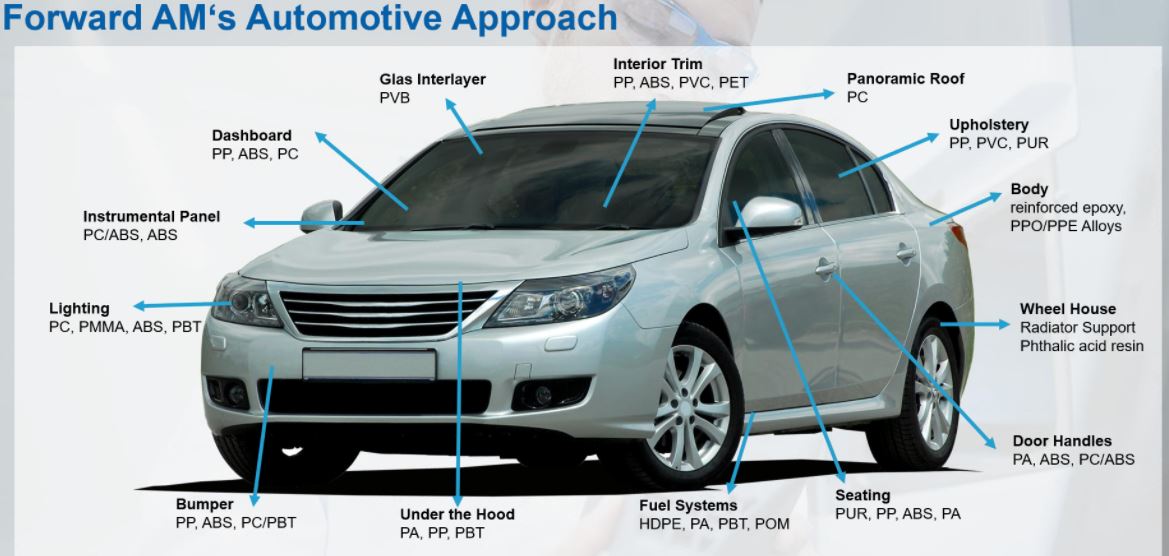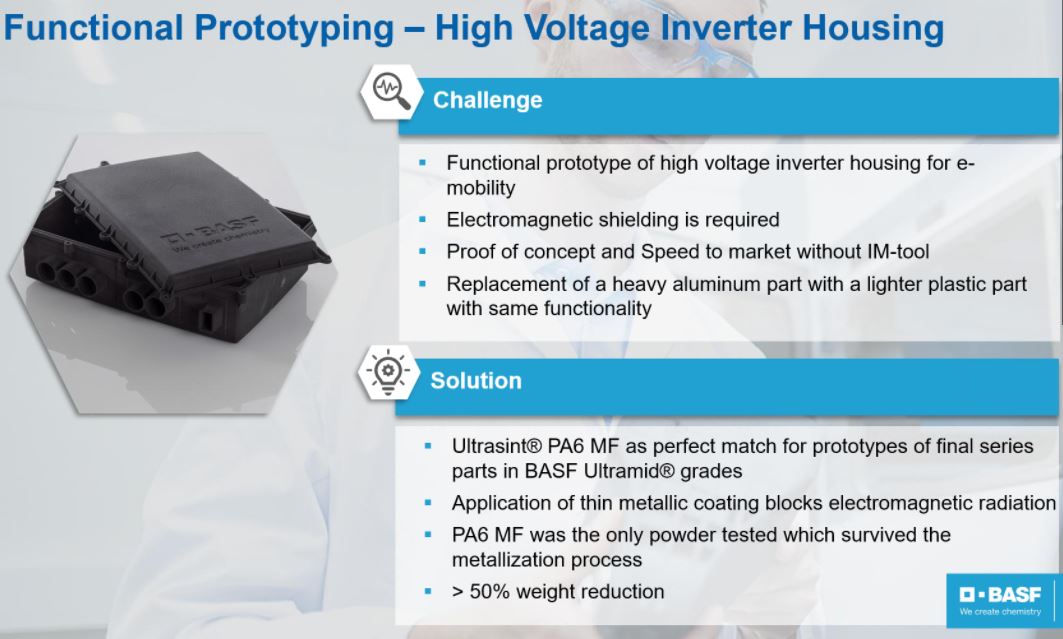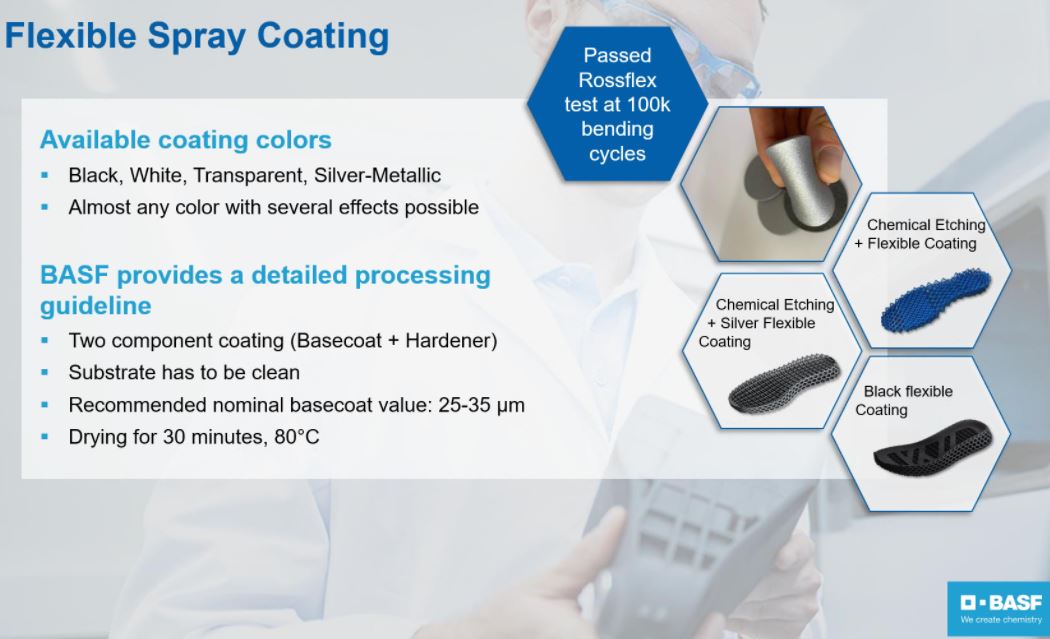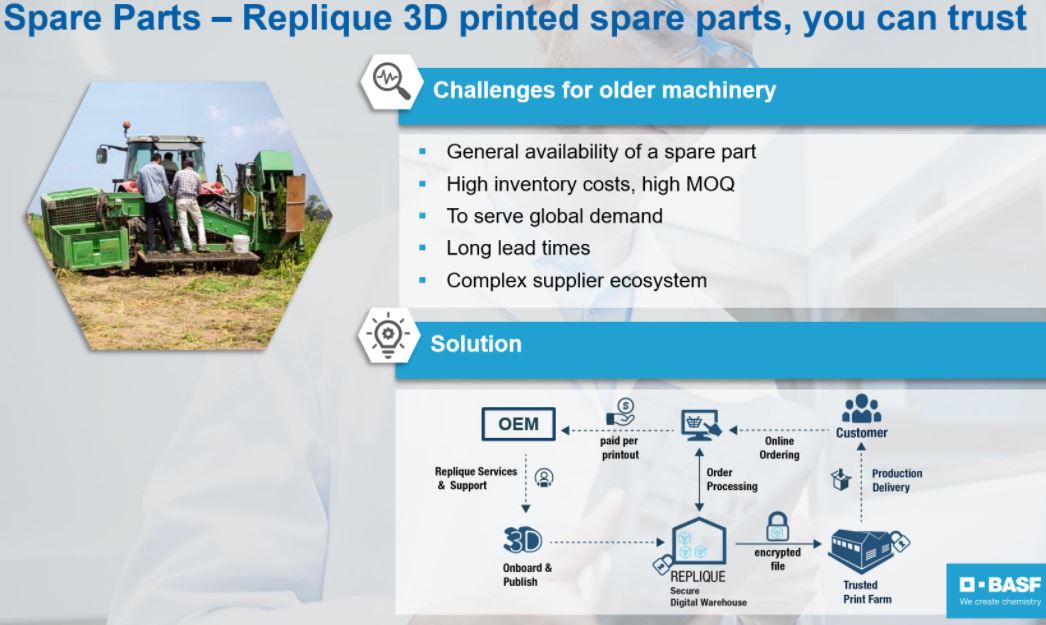This Formnext, BASF Forward AM, the chemical giant’s 3D printing business division, presented the latest updates and developments in its offerings for the automotive sector—which remains among the top user industries worldwide for additive manufacturing solutions. This year, the company presented its developments in highly demanding automotive applications, as well as in new advances using lattice optimization, in TPU and PP materials, and in photopolymer production-scale solutions in partnership with Photocentric. For an overview of the developments in automotive, Christian Reinhardt, Business Development Manager for Transportation at Forward AM, virtually presented use-cases and actual parts in this year’s only-digital event.
The company has already worked to develop specialized materials and parts ranging from 3D printed functional prototypes, interiors, spare parts, safety aid tools and assembly fixtures. Clear that it is not interested in developing its own hardware, BASF offers solutions in additive manufacturing for automotive through specialized materials, often developed jointly with open platform printer manufacturers, and through application development, done jointly with end-users for feasibility analysis, small series production, or through production partners or service/solution providers. These include Materialise, Shapeways or Sculpteo, the French-based service provider acquired by BASF this year. Just in June this year, Sculpteo announced new offerings in high performance materials, including BASF’s PA6, PP, and TPU, specifically for automotive applications. Smartech had noted in the trend in applied polymer materials shifting from just nylon or ABS to include TPU and PP materials in the automotive industry.
While there are several materials and requirements in automotive applications, BASF has identified key components and materials in traditional automotive manufacturing, and have developed 3D printing materials for many applications – such as polypropylene (PP) for upholstery, PA for fuel systems or components under the hood, ABS, PMMA or PC materials for dashboards, instrumentation panels, bumpers, lighting, door handles and more. Yet Reinhardt points out that, while there are hundreds of grades of polyamide for the traditionally used injection molding, there are few for 3D printing. It is also important to ensure that the 3D printing materials deliver the same or better performance as those that are injection molded.

The blue box indicates which materials Forward AM can address in automotive applications currently. Image courtesy of BASF
While AM materials and technology are still catching up with traditional methods and materials, BASF sees the technology readiness level (TRL) and current usage as quite high already for design or functional prototypes, individualization, safety aids, robot grippers and assembly fixtures. Where BASF suggests 3D printing is still maturing is in spare part applications and printed foams or lattices for special series applications.
In a collaboration with Hymer, one of Europe’s leading motorhome and caravan manufacturers, BASF jointly developed a concept camping van for the future: VisionVenture, which uses over 20 different innovative materials provided by BASF, and includes features such as a self-inflating pop-top roof, lightweight natural stone claddings, and over 100 3D printed parts. In this case, BASF presented its solution to address the high-cost and effectiveness in 3D printed appearance prototypes. For concept projects, tools are rarely available to design or manufacture unique parts, and 3D printing becomes a viable solution to manufacture complex, unusual, concept designs. With photopolymer 3D printing solutions from Photocentric, BASF was able to bring the cost down by nearly half, relative to comparable traditional technologies, while also delivering the required performance, finish, and quality.
In functional prototyping, BASF Performance Materials presented a solution for an inverter housing, typically made of aluminum, 3D printed using plastic—which, among other benefits, makes the component 50% lighter. Yet the component also needed to shield electromagnetic radiation, so, in this case, the plastic part was given a metallic coating, and BASF’s Ultrasint PA6 MF was the only powder tested which survived the metallization process for this application.
The most interesting case presented was an engine bracket developed in collaboration with Mercedes Benz. In automotive manufacturing, when a chassis is assembled with the engine, it is typically called the ‘wedding’, and in classical weddings, the two partners are connected by love and, perhaps more importantly, strength. In this case, the strong love connecting the two partners (engine and chassis), is the engine bracket.
Whenever a new chassis or engine design is developed, the engine bracket connecting the two also needs to be adapted. In conducing test drives, traditional manufacturing methods for the engine bracket are not ready or available, and the 3D printed part needs to deliver the same performance as the series part made of PA 6.6 GF50. BASF successfully used its PA6 MF material for this application, and the component performed as well as its injection molded counterpart. Interestingly, even though PA6 MF’s mechanical properties were worse on the technical data sheet compared to PA6.6 GF50, BASF was able to optimize the design by adding more material to deliver the same performance. As Reinhardt points out, it is one of the few AM use cases where the 3D printed part is optimized to be heavier than the traditional part yet delivers comparable or better performance.
In another application, pre-series cars were equipped with fluid containers, non-critical parts with complex geometry, that were 3D printed using different materials to manage high temperatures and/or have chemical resistance properties. BASF developed a method where the fluid containers could be 3D printed in two parts, and welded with strength similar to parent material strength.
Foams are nearly impossible to produce as one-piece, with varying mechanical properties in different areas. Using TPU materials and lattice structures, BASF is able to design custom lattices and foams with tunable properties for custom behavioral responses in different areas of the lattice depending on required support: seats, arms, headrests, lumbar protection, etc. The company also introduced its flexible spray coatings to change the color and appearance of 3D printed TPU parts. BASF Coatings, along with Forward AM, developed this flexible coating, available in four colors currently, which has passed the Rossflex bending test and behaves just as the 3D printed TPU part.
For automotive spare parts applications, BASF has an award-winning start-up from its business incubator unit Chemovator. The startup, called Replique, is working to develop a decentralized, end-to-end workflow and marketplace for 3D printing of spare parts.
Their platform will enable OEMs to upload designs and have them printed close to the customer or supplier location, protected by encryption, and will allow users to leverage BASF’s design, engineering, and printing expertise for digital warehousing or marketplace solutions.
You can view the recorded expert session webinar here.
Subscribe to Our Email Newsletter
Stay up-to-date on all the latest news from the 3D printing industry and receive information and offers from third party vendors.
Print Services
Upload your 3D Models and get them printed quickly and efficiently.
You May Also Like
Johns Hopkins University Researchers Develop HyFAM Technology
Two scientists from Johns Hopkins University, Nathan C. Brown and Jochen Mueller, have developed a hybrid manufacturing technology they call HyFam, or Hybrid Formative Additive Manufacturing. Their work on this technology...
3D Printing G-Code Gets an Upgrade: T-Code
Good old G-Code still manages many 3D printers, great and small. Just like the STL, it’s a standard that enables collaboration while also holding the additive manufacturing (AM) industry back....
AM Rewind: The Biggest News and Trends of 2024
After a sluggish 2023, driven by persistent inflation and geopolitical tensions, 2024 has seen some recovery. Economic growth climbed from about 2.8 percent in 2023 to a modest 3.2 percent...
Metal Wire 3D Printer OEM ValCUN Announces Plans for 2025 Expansion
ValCUN, a Belgian original equipment manufacturer (OEM) of wire-based metal additive manufacturing (AM) hardware, has announced that the company has entered the next phase of its growth trajectory, making key...







































